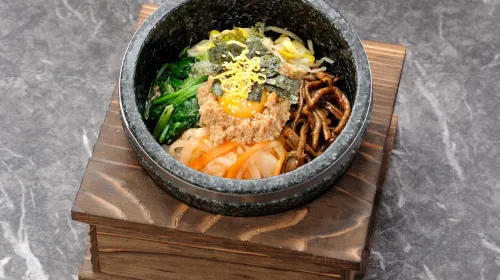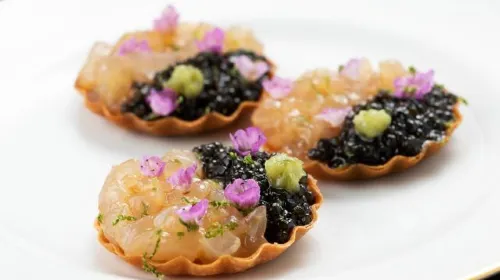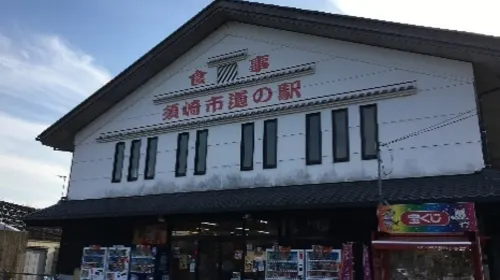Best Restaurants in July in Ochi (Updated 2025)
 View on Map
View on MapCuisines
All
Japanese
Coffee Shops
Asian Cuisine
Specialties
Afternoon Tea
Open Late
View
Business Hours
0:00 am~5:00 am
5:00 am~10:00 am
10:00 am~02:00 pm
Price
AUD 0
AUD 206+
Provided Services
Non-smoking Area
Take Out
Parking

 Sinun Travel# After Spring Festival Travel I recently bought the book "Made in Japan" by Miura Haruma on the recommendation of a friend. I have seen his IG videos before, which introduce the special topics serialized in Japan's "プラスアクト" monthly magazine. I occasionally see myself Familiar ones will resonate. It took 4 years to collect materials from 47 prefectures in Japan and explore culture, art, history, industry and other aspects as the theme.
...
In addition to the essence of Japanese manufacturing in 47 prefectures, the book also contains Haruma’s interviews and transcripts. Although some of the content may seem boring now, by reading between the lines, you can understand various Japanese manufacturing scenes. Just from the three words "Made in Japan", you will definitely think that it means "thing". However, this is not the whole answer to this book. The book divides Japanese products into seven units: Tohoku, Kanto, Chubu, Konji, Chugoku, Shikoku, Kyushu and Okinawa. Each city has Japanese products with special value.
...
For example, the farmers who grow Tenei rice in Fukushima, the Ibaraki Fireworks Factory (participating in the production of one of Japan's three major fireworks), Fukui's glasses (where 95% of Japan's glasses are manufactured), the Nippon Tile Manufacturing Factory in Nara (culture) an indispensable role in asset inheritance), Okayama’s denim production line (Japan’s earliest denim production place), Kochi’s bonito fish master (a fishing boat), and Miyazaki’s Kagura noodle craftsman (traditional folklore) and other contents, presenting a rich outline of "Made in Japan" in a variety of ways.
...
Looking at the themes selected for each city, I was actually a little surprised, because it is really not an easy task to tell the story of a city with one thing or one brand. Therefore, I find it very interesting to see how others "choose". In addition to the value of the selected topic through the description between the lines, you can feel more in the "Made in Japan" and "COLUMN Miura Haruma's Thoughts on the Future and Inheritance" at the end of each article. Rich source of inspiration.
...
For example, in Ibaraki Prefecture where Haruma was born, Tsuchiura City within the prefecture holds the "Tsuchiura National Fireworks Competition", one of Japan's three major fireworks competitions, every year. In the postscript of the interview with the fireworks manufacturer, Haruma is in "COLUMN Miura Haruma" The Future and Inheritance of Thinking reads like this:
"The Yamazaki Fireworks Factory is located next to a swamp. The location is beyond my imagination. It is a very quiet place. Watching Mr. Sasaki actually making fireworks, I deeply realized that this job requires a lot of work. A certain degree of endurance. Like art or a masterpiece, it is important to face the creation and yourself thoroughly. It is precisely because of the solitary moment of silence that you can develop brilliance. For those who have never seen the Tsuchiura National Fireworks Display, please come and witness the pride of Ibaraki.”
...
This 400-page "Made in Japan" may be a bit difficult to read, but considering that it is the accumulation of materials collected during four years of traveling to Japan, it seems that you can feel the heart of the text. By reading word by word, you may be able to slowly feel the various things that belong to the land of Japan. This is actually a way of traveling on paper.
Sinun Travel# After Spring Festival Travel I recently bought the book "Made in Japan" by Miura Haruma on the recommendation of a friend. I have seen his IG videos before, which introduce the special topics serialized in Japan's "プラスアクト" monthly magazine. I occasionally see myself Familiar ones will resonate. It took 4 years to collect materials from 47 prefectures in Japan and explore culture, art, history, industry and other aspects as the theme.
...
In addition to the essence of Japanese manufacturing in 47 prefectures, the book also contains Haruma’s interviews and transcripts. Although some of the content may seem boring now, by reading between the lines, you can understand various Japanese manufacturing scenes. Just from the three words "Made in Japan", you will definitely think that it means "thing". However, this is not the whole answer to this book. The book divides Japanese products into seven units: Tohoku, Kanto, Chubu, Konji, Chugoku, Shikoku, Kyushu and Okinawa. Each city has Japanese products with special value.
...
For example, the farmers who grow Tenei rice in Fukushima, the Ibaraki Fireworks Factory (participating in the production of one of Japan's three major fireworks), Fukui's glasses (where 95% of Japan's glasses are manufactured), the Nippon Tile Manufacturing Factory in Nara (culture) an indispensable role in asset inheritance), Okayama’s denim production line (Japan’s earliest denim production place), Kochi’s bonito fish master (a fishing boat), and Miyazaki’s Kagura noodle craftsman (traditional folklore) and other contents, presenting a rich outline of "Made in Japan" in a variety of ways.
...
Looking at the themes selected for each city, I was actually a little surprised, because it is really not an easy task to tell the story of a city with one thing or one brand. Therefore, I find it very interesting to see how others "choose". In addition to the value of the selected topic through the description between the lines, you can feel more in the "Made in Japan" and "COLUMN Miura Haruma's Thoughts on the Future and Inheritance" at the end of each article. Rich source of inspiration.
...
For example, in Ibaraki Prefecture where Haruma was born, Tsuchiura City within the prefecture holds the "Tsuchiura National Fireworks Competition", one of Japan's three major fireworks competitions, every year. In the postscript of the interview with the fireworks manufacturer, Haruma is in "COLUMN Miura Haruma" The Future and Inheritance of Thinking reads like this:
"The Yamazaki Fireworks Factory is located next to a swamp. The location is beyond my imagination. It is a very quiet place. Watching Mr. Sasaki actually making fireworks, I deeply realized that this job requires a lot of work. A certain degree of endurance. Like art or a masterpiece, it is important to face the creation and yourself thoroughly. It is precisely because of the solitary moment of silence that you can develop brilliance. For those who have never seen the Tsuchiura National Fireworks Display, please come and witness the pride of Ibaraki.”
...
This 400-page "Made in Japan" may be a bit difficult to read, but considering that it is the accumulation of materials collected during four years of traveling to Japan, it seems that you can feel the heart of the text. By reading word by word, you may be able to slowly feel the various things that belong to the land of Japan. This is actually a way of traveling on paper.







